Double flowers: on the work of Keto Logua
Originally from Tbilisi and now in Berlin, Keto Logua takes botany, petals and sexes to speak of multiplicity, ambiguity, and subjectivity
Things we don’t have a name for
Keto Logua (b. 1988) uses words like botanical and floral and speaks of the world of roses. Her vocabulary opens a domain. Different flower species have X petals and X sexual organs. “The wild rose has five petals,” she explains, “over time it became the modern rose of endless petals. The organs of the flower slowly disappear, as the organs become petals themselves.” The titles of the sculptures and paintings in the exhibition Double Flowers at LC Queisser in Tbilisi do indeed sum up the pieces well. Cross Section and Natural History repeat over different works in the same show. “Similarity doesn’t exclude importance; variation motors diversity,” says the artist.
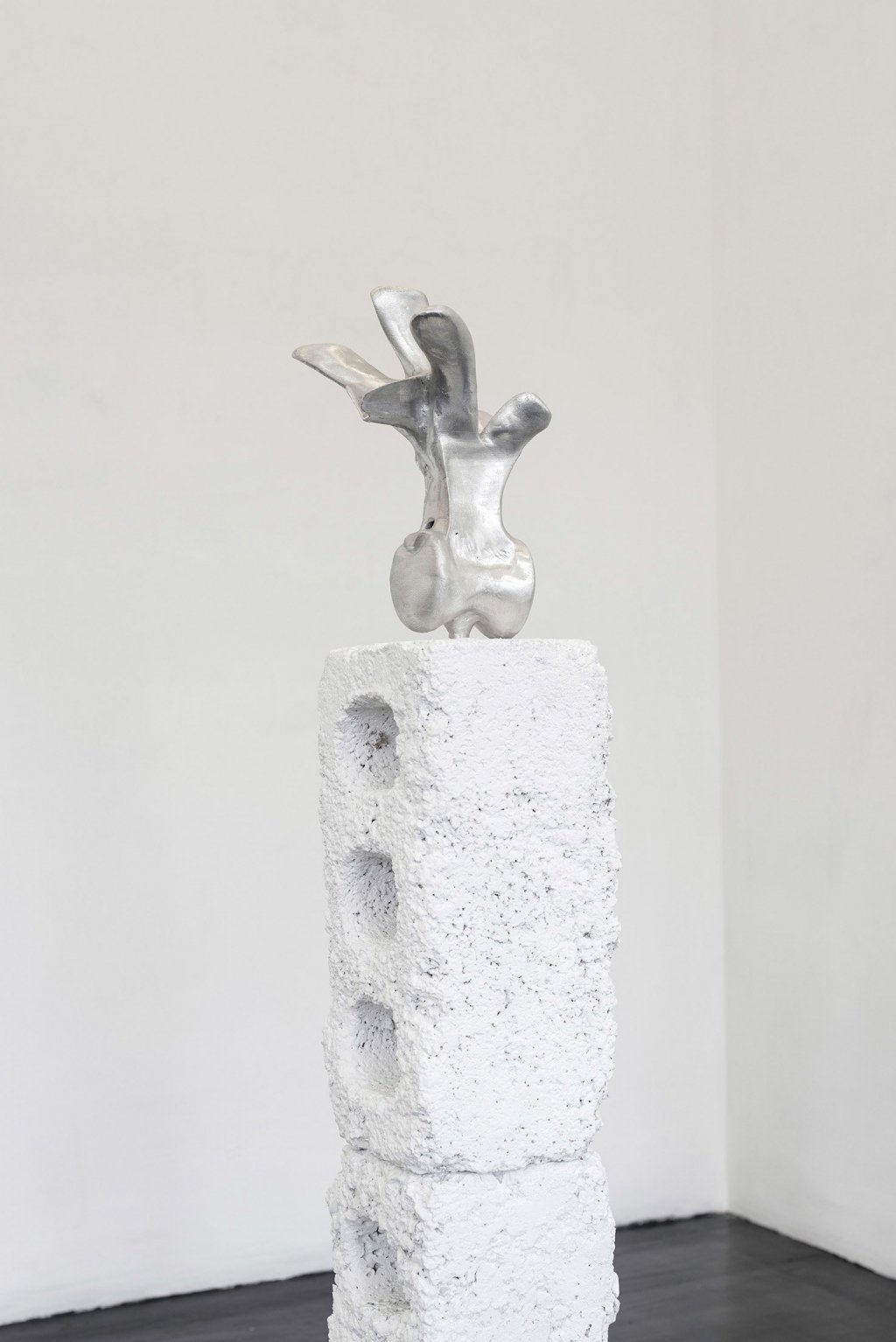
Wood, tin, steel, blocks of concrete, aluminium
The artist refers to working as a search rather than research. “I wanted to explore how we make a selection of natural objects, art objects and technologies of production/reproduction. Roses became part of it.” It is usually through reading that she encounters concepts to explore, before looking for what she calls a material translation. This formulation nicely points out how she uses existing models (3D or scientific drawings), which she prints, pours or paints. But all stems from intersecting languages and depictions; mutants, like the models in her exhibition. The latter combine analogue and digital modes of production in which the patterns and patinas of the natural and the rigid converge.
A stegosaurus back bone that she found online on a 3D digital media repository is out of poured metal and operates as the centrepiece of the exhibition. It looks smooth and cold, real and fantastical. It sits on top of grainy concrete blocks. The building blocks have 3 oval shapes curved out of them. “This is the Soviet model”, she explains. She found them left in piles in the streets around the exhibition space, which is located where the artist grew up in Georgia. “This type, or model of stone, is now replaced by European standards.” She says it with a little smile, suggesting the absurdity of standardisation. Why is one model better than another, two square holes rather than three oval ones? The artist asked a friend architect, the latter replied hesitantly, and speculated.
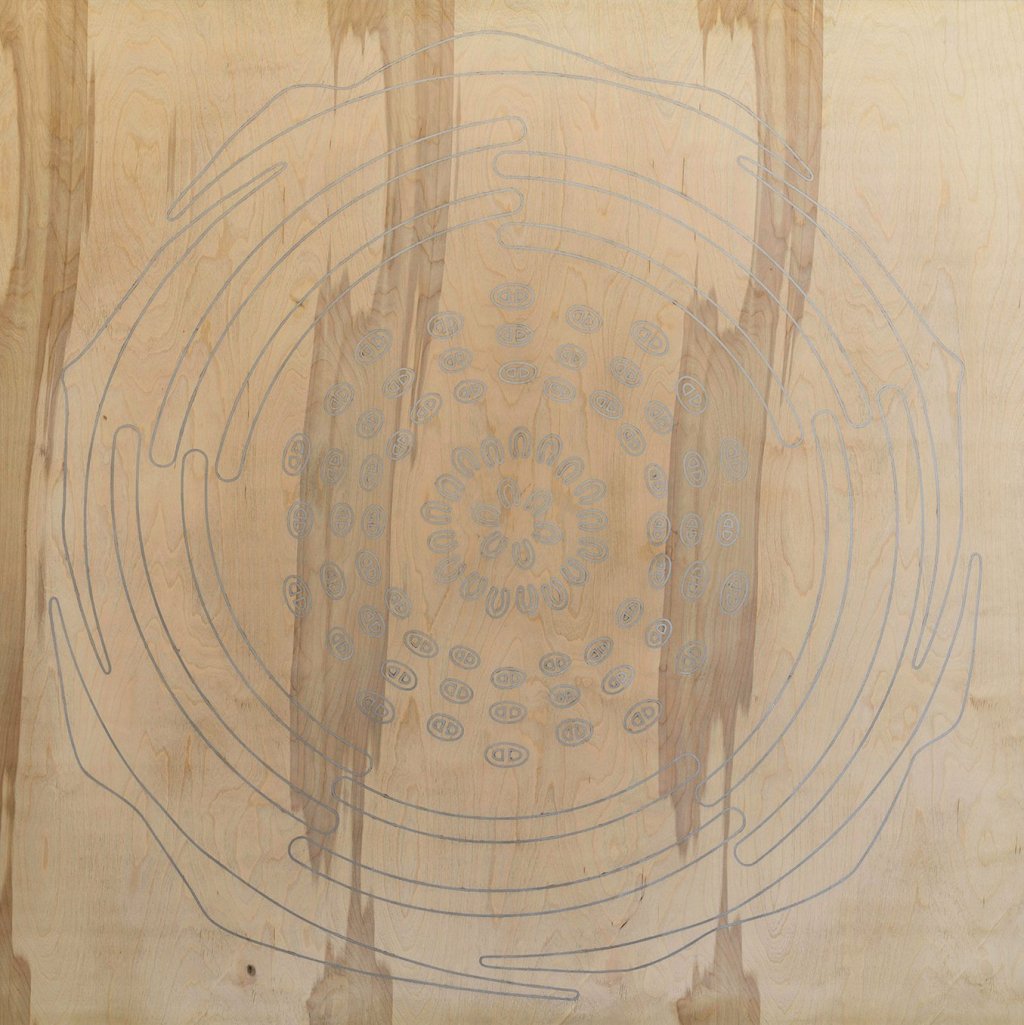
A or B
Interestingly, when collaborating with different scientists, it became apparent that both the arts and science had certain expectations from each other’s fields. Keto Logua expected real answers, whereas the scientists wondered why she wouldn’t just be interested in the poetry of the studied subject. According to the artist, the way we paraphrase does multiply in our understanding and our projected desires.
The way in which the graphics are painted stems from a botanical technique for schematically organising floral information. The graphic image references “a type of flower”, summarising it. Precisely this habit of taking denominators in science seems to motivate most of the artist’s work. For a rule that generally applies, also by definition excludes.
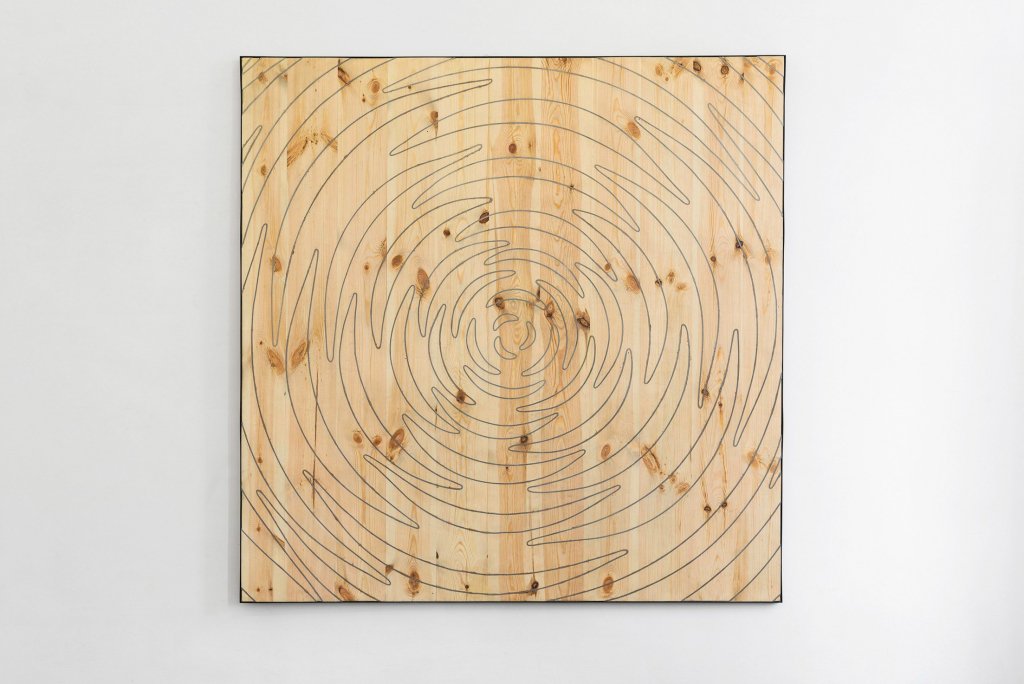
One is converted into double its form
In Cross Section, diagrams used since the 19th century as objective documentation of the flower map its inner architecture in terms of relative number of petals, sexes, and depicts the flower’s built-in crosscut and symbols. Keto Logua contacted a botanist, asking him how to draw the diagram of the principle of double flower, which is a known phenomenon in which a flower emerges within another through mutation. One is converted into double its form. Using the all-too-human system of categorising and stripping the sensible and sensitive, Keto Logua uses exactly the language of diagrams to speak of the deviant.
Roses were the first flowers to be documented to have this doubling, and as it was recognised as something beautiful, they were cultivated accordingly. As the artist says: “We often see mutations as a treat, because of their unpredictability, we don’t know how to deal with them. Our approach to variation — which in my opinion to nature and natural objects is crucial, vital and beautiful, says something about our standards.” So she designed her own. Over the four rooms of the gallery, she presents mutations, in metal inlay paintings.
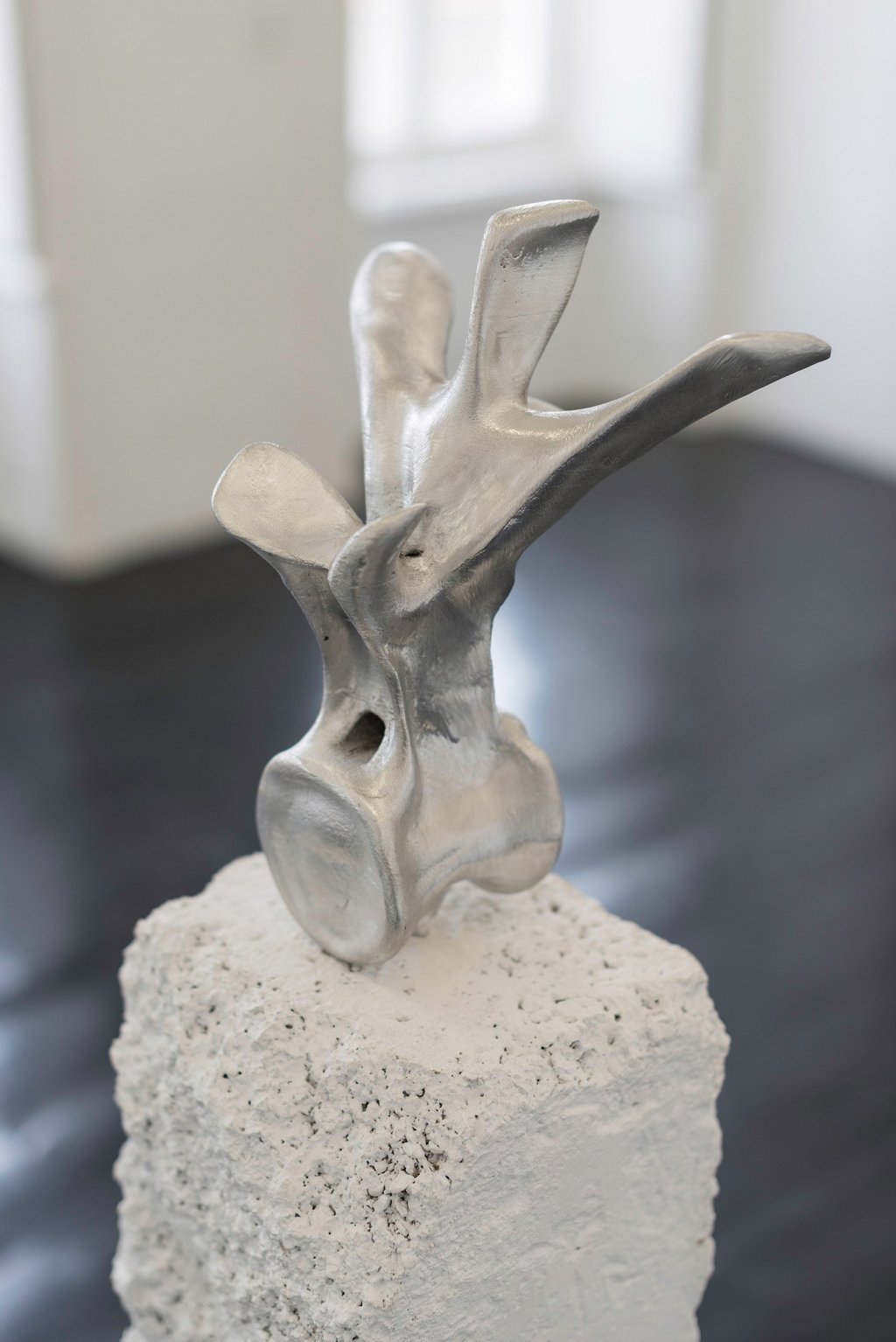
There are limits to saying in language what the tree did
While today’s voice seems borrowed from literature about cyborgs, non-humans, octopi and slime molds, we can wonder what happened to “evolution” as an idea. Keto Logua speaks of it not as small-step-evolutions but as change happening through many mutations, branching out rather than linearly reproducing. She pleads for a flowering in different directions, emphasising mutants as active, equal companions to science’s denominators. “However mathematically subscribed, science is as a suggestion, rather than an endpoint.” she says.
Her abstract looking work is charged with how language shapes our understanding, and knowledge shapes our behaviour. What matters shapes the way we speak of it. This is what Keto Logua indirectly refers to when talking about botanical, floral petals and sexes: multiplicity, ambiguity, and subjectivity. She doesn’t push concepts forth but she elegantly layers them over the pieces, in words that “vitalise” and change one’s perception of the works themselves. As María Lugones says it, “I am not a healthy being in the world that constructs me unplayful.”
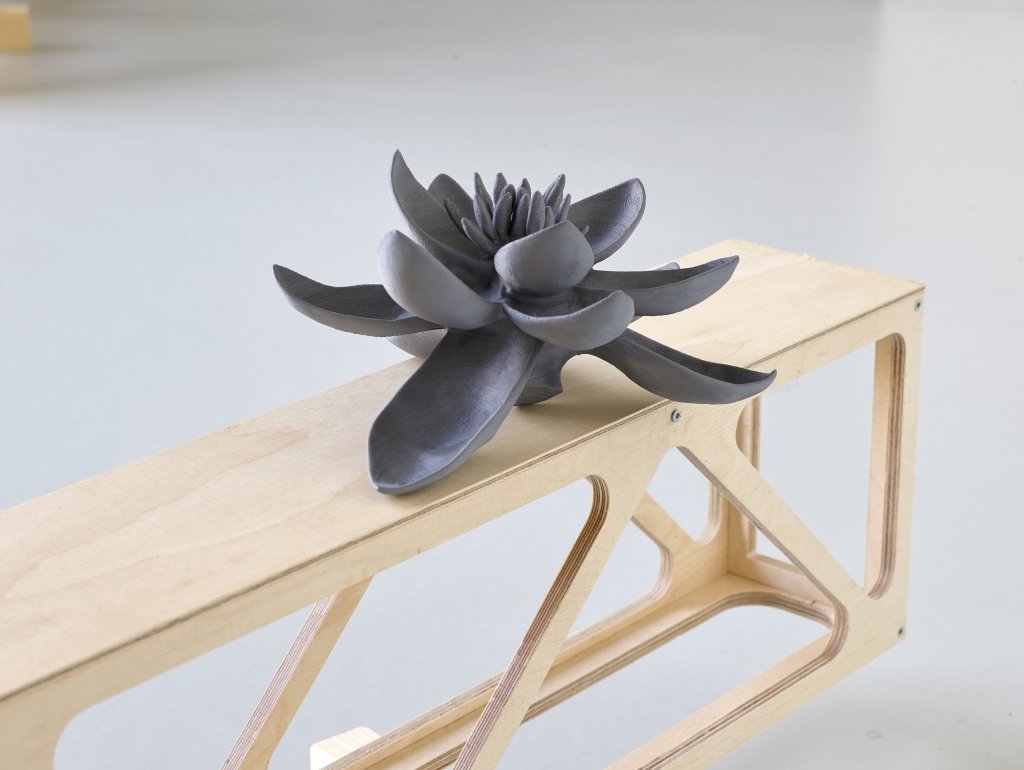
Like consonants and vowels
Her work moves from language into existence. The way her pieces come into being often include (scientific) models. In an earlier work, eight flowers were printed from an existing 3D model. The design of the latter comes from hundreds of researchers’ minds and data put together in order to come to an image of what the “Ur-Blüte” (the ancestral primordial flower) could look like. It’s a speculative construct as the researchers couldn’t reconstruct it completely; it was probably bisexual and it was impossible to tell what color it was. In 3D prints these speculative flowers titled Bisexual and Radially Symmetric appear in black and white installed across the gallery space. The moment the petals touch the stem is the moment the eye gets lost and feels the fiction; the intersection of where the petal meets the stem is abstracted, smoothened, with 3D print matter that would never be there in a real flower. The artist designed an environment for the Ur-Blüte, collaborating with a specialised illustrator, using plants that existed 250 million years ago, generating meaningful fiction. It sounds so good in German: “Ur-Blüte”.
[For artists dealing with catalogues of nature, here is our overview or Renaissance illustrator Jacopo Ligozzi. Ed.]
November 2, 2021
